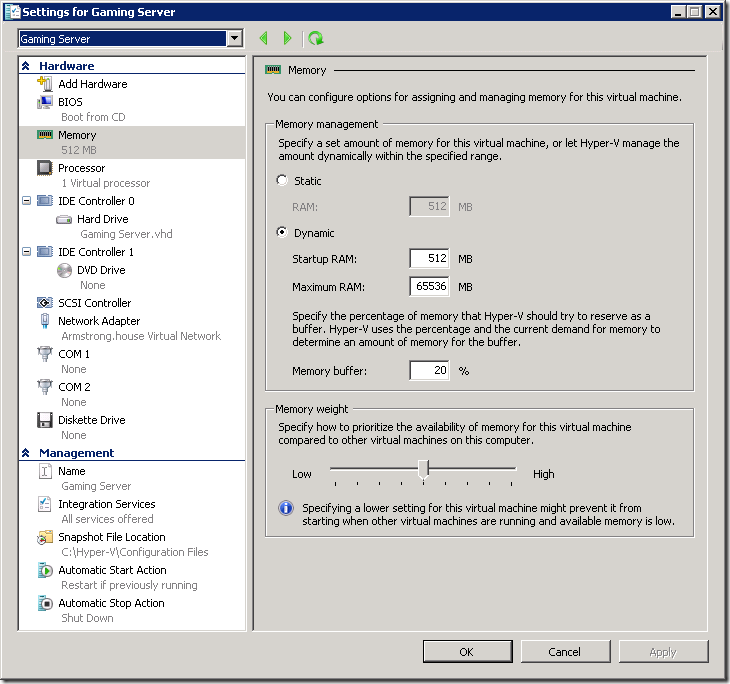Updates to Dynamic Memory UI in SP1 RC - Part 2
Last week I discussed some of the changes that were made to the Hyper-V manager in response to feedback from beta users of the service pack 1 release. Today I am going to talk about the changes that were made to the virtual machine settings user interface:
There are three changes that have been made here. In reverse order of complexity (simplest change first):
“Memory priority” is now “Memory weight”
This was changed for two reasons. First, it is more consistent with other areas in Hyper-V where we have a similar concept and use the term weight (for instance: you can specify the relative weight of the processor resource). Second, there was some user confusion where people expected virtual machines with a higher memory priority to be treated in particularly special ways. The memory weight is only used when there is contention for memory resource – and virtual machines with higher weights are given greater consideration when distributing memory.
The memory buffer is now configured using a text box instead of a slider.
A number of users complained that it was hard to tell at a glance what the exact memory buffer was for a given virtual machine. Using a text box makes this obvious.
Memory buffer now uses different math.
In the beta release the memory buffer specified what percentage of the total memory used by the virtual machine should be buffer (e.g. so a virtual machine that needed 900MB of memory with an 80% buffer would end up using 4.5GB of memory – making the buffer use 80% of the total 4.5GB of memory). Most of our users did not think of it in this way – so now the buffer is the percentage above the used memory. So a virtual machine that needs 900MB of memory and has an 80% buffer will get 1620MB of memory (900MB needed plus 80% more – or 720MB extra – for a total of 1620MB). This also means that the acceptable range of input is changed too. You can now have a buffer that goes from 5% to 2000%.
Cheers,
Ben
